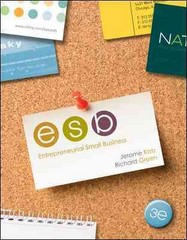n terms of the business outcomes shown in Figure 20.3 , which outcomes is Tims firm facing
Question:
n terms of the business outcomes shown in Figure 20.3 , which outcomes is Tim’s firm facing at this point?
It was the summer of 2009 and Tim had to make a decision. He had started with an idea of using advanced electronics to make any seat in the stadium “the best seat in the house.” To do that he created SkyBOX, a program for displaying game videos, sports statistics, and interactive fan-focused social networking (like votes, chats, etc.) inside sports venues. In 2003 SkyBOX was imagined as a rental fleet of PDAs “hardened”
against spills and drops and fed data through a Wi-Fi installation put into participating stadia. By 2009 the idea morphed into an application which could be run on 3G cell phones like the iPhone as well as personal computers equipped with cellular Wi-Fi.
SkyBOX was a darling of DEMO 2006, and could point to over 80 articles and news segments extolling the idea, the technology, and the charismatic founder behind it. Inc . magazine had profiled Vivid Sky in their 2006 valuation story. Pilot tests with the St. Louis Cardinals (Tim’s hometown team), the Detroit Tigers, and the Detroit Redwings in 2007 and 2008 had been very successful. Since 2008 SkyBOX was on sale online at the iPhone Applications Store and had sold several hundred copies. In terms of buzz and media appreciation, SkyBOX was a winner.
The financial situation was the problem. Tim had sunk all his own money into Vivid Sky to bring it to market. He had advertisers lined up and ready to buy visibility on SkyBOX. He had access to the baseball, football, basketball, and hockey stadia, but he needed $1,000,000 to deploy the system. He had gotten half the funding from his family, local friends, and friends of friends, but the economic downturn meant he had been unable to get the remaining $500,000 investment from any of the Fortune 1000 firms looking at SkyBOX.
Step by Step Answer:






